 (Gerry Furth-Sides) Gourmet Basil & Pomegranate Natural Lollipops, not Tootsie Pop suckers, first come to mind when I think, “candy on a stick.” This .75 ounce, sweet and savory, foresty beauties vary slightly from one another because they are hand-poured into molds. Bits of the fruit and herb extended creatively outside each circle, too. They are made fresh to order by the Melville Candy Company, individually wrapped and tagged, then tied with a raffia ribbon.
(Gerry Furth-Sides) Gourmet Basil & Pomegranate Natural Lollipops, not Tootsie Pop suckers, first come to mind when I think, “candy on a stick.” This .75 ounce, sweet and savory, foresty beauties vary slightly from one another because they are hand-poured into molds. Bits of the fruit and herb extended creatively outside each circle, too. They are made fresh to order by the Melville Candy Company, individually wrapped and tagged, then tied with a raffia ribbon.

Melville Candy Company’s extensive Gourmet Flavor Lollipops embedded with a variety of specialty ingredients include the wonderfully textured Blueberry & Thyme (at the top) and Ginger & Lemon below; Lavender & Honey; Cilantro & Lime; Peppermint & Cacao and, of course, Pumpkin & Ginger for the fall. The cost is $55.99 for a 24-pack, and the flavors can be mixed.
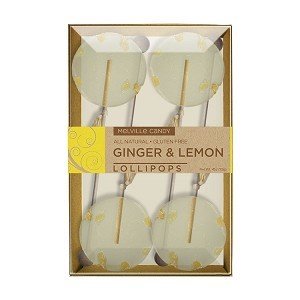 Honey Spoons made with real honey in each batch, and seasonal & trendy collections, gourmet hard candy lollipops, and chocolate treats are also offered.
Honey Spoons made with real honey in each batch, and seasonal & trendy collections, gourmet hard candy lollipops, and chocolate treats are also offered.
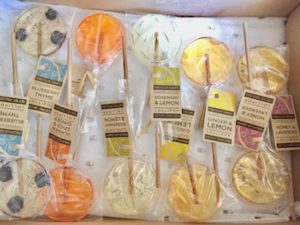 Cave people thousands of years ago most likely collected honey from beehives with a stick and licked that stick in the same way we lick a lollipop today. Ancient Chinese, Arabs, and Egyptians all produced fruit and nut confections embedded in dried honey, with sticks inserted into them for easier eating.
Cave people thousands of years ago most likely collected honey from beehives with a stick and licked that stick in the same way we lick a lollipop today. Ancient Chinese, Arabs, and Egyptians all produced fruit and nut confections embedded in dried honey, with sticks inserted into them for easier eating.
English versions followed in the 1800’s when the Brits labeled the confection, ‘Lollypop’ literally means ‘tongue slap’ – for ‘tongue’ for the soft street food version of the time. When sugar became more plentiful, the English began making boiled candy treats, with sticks for easier eating. At the end of the century in the United States, hard candy was also put on the tips of pencils for children.
But it was the era of automation in the early 20th Century opened the floodgates. The owner of one candy company began to market the modern idea in 1908, three years after he began taking home hard candy embedded with the stick used to stir them while cooking.
At about the same time in Racine, Wisconsin, the Racine Confectionary Machine Company automated the process of inserting a stick into candy at the rate of 2,400 sticks per hour.
But it was George Smith, of the confectionary company, Bradley Smith Company, earns official credit for inventing the modern lollipop in 1908, trademarking the term in 1931. He was inspired by a famous racehorse named “Lolly Pop,” which tied in perfectly with the British terminology.
A few years later, Russian immigrant Samuel Born invented the machine to insert sticks into candy called the “Born Sucker Machine” (after the popular saying, “a sucker is born every minute.”)
Lollipops today come in all shapes and sizes, at least 100 in all, and companies can produce up to 3,000,000 per day
The finest are made by Melville Candy Company, a family owned, third generation confectionery company located in Weymouth, Massachusetts. Using a family recipe perfected by Grandpa Melville over 75 years ago.

Master candy maker Grandpa Francis E. Melville
Opened in 1978 by father and son, Gary and Joe Melville, the family proudly continues the tradition. Each product produced is hand-made, packed and inspected in the USA.


 (Gerry Furth-Sides) For lovers of food with texture, such as myself, marshmallow confections such as Peeps have always been a favorite. This year my list of treats now also includes the new Melville Candy Company marshmallow lollipops.
(Gerry Furth-Sides) For lovers of food with texture, such as myself, marshmallow confections such as Peeps have always been a favorite. This year my list of treats now also includes the new Melville Candy Company marshmallow lollipops.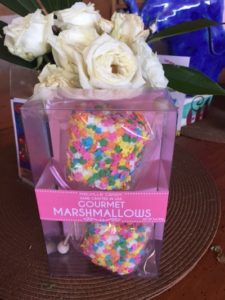
 Melville Candy Company is a family owned, third generation confectionery company located in Weymouth, Massachusetts. Using a family recipe perfected by Grandpa Melville over 75 years ago, the company produces gourmet hard candy lollipops and chocolate treats.
Melville Candy Company is a family owned, third generation confectionery company located in Weymouth, Massachusetts. Using a family recipe perfected by Grandpa Melville over 75 years ago, the company produces gourmet hard candy lollipops and chocolate treats.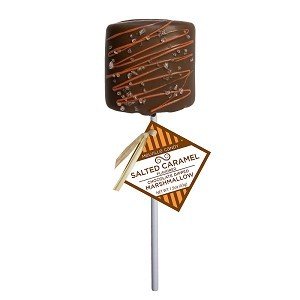
 Adding to this sweet story is the history of PEEPS, the lovable confection that turns out to have a novel “Jewish” history. Here is an article on the story from the JEWISH FORWARD.
Adding to this sweet story is the history of PEEPS, the lovable confection that turns out to have a novel “Jewish” history. Here is an article on the story from the JEWISH FORWARD.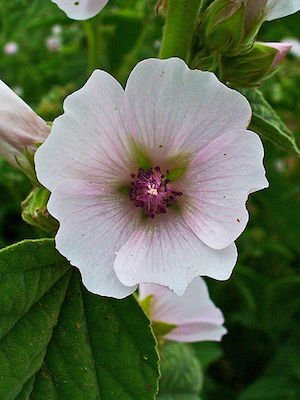
 Gerry Furth-Sides
Gerry Furth-Sides  Barbara Hansen
Barbara Hansen  Chef-owner Alain Cohen
Chef-owner Alain Cohen  Roberta Deen
Roberta Deen  Jose Martinez
Jose Martinez  Nivedita Basu
Nivedita Basu